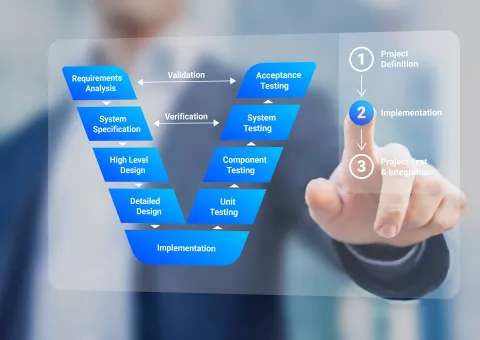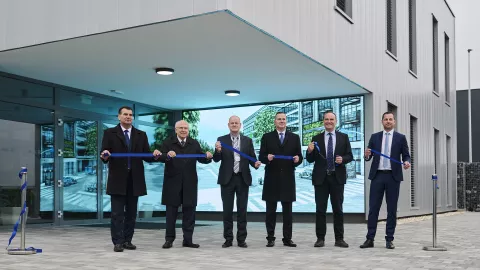
To reduce test cases and define relevant ones, we offer unique, efficient methods in the field of verification and validation.
Verification
This concerns whether the system requirements from the system design have been implemented correctly.
With our expert knowledge and our methods for guaranteeing full coverage and traceability of system requirements, the test catalogs are generated using proven tools and methods.
Validation
Here, we assume the end user perspective and ensure that the correct functions have been implemented.
In doing so, we challenge the system to cover as many situations as possible that it might encounter during its lifetime in the various markets.
Ontology-based approach
An ontology-based approach for generating test cases is used to derive additional links and consequences of traffic activities and behavior. These enable the environmental condition to be captured in detail.
Collecting and learning such concepts allow relevant test scenarios to be created more easily, providing you with more precise feedback on the systems tested.
Game-based approach
Using a game-based approach, environmental parameters and the behavior of road users and their interactions are changed purposefully to bring about critical driving scenarios.
The system to be tested plays against the environment, as it were. Guided by reward metrics, the system is challenged by generating abnormal behavior from road users or other unsafe situations.
Test Catalogs
Our comprehensive test catalogs keep a precise record of content to be tested, including the traceability to the system requirements.
Requirements-Based Test Plans
In alignment with vehicle and system development plans, we create clear, project-specific test plans and a specific timeline.
Definition of Ideal Test Environments
We state specifically what should be tested, when, and in which test environment – with the respective advantages and limitations.






